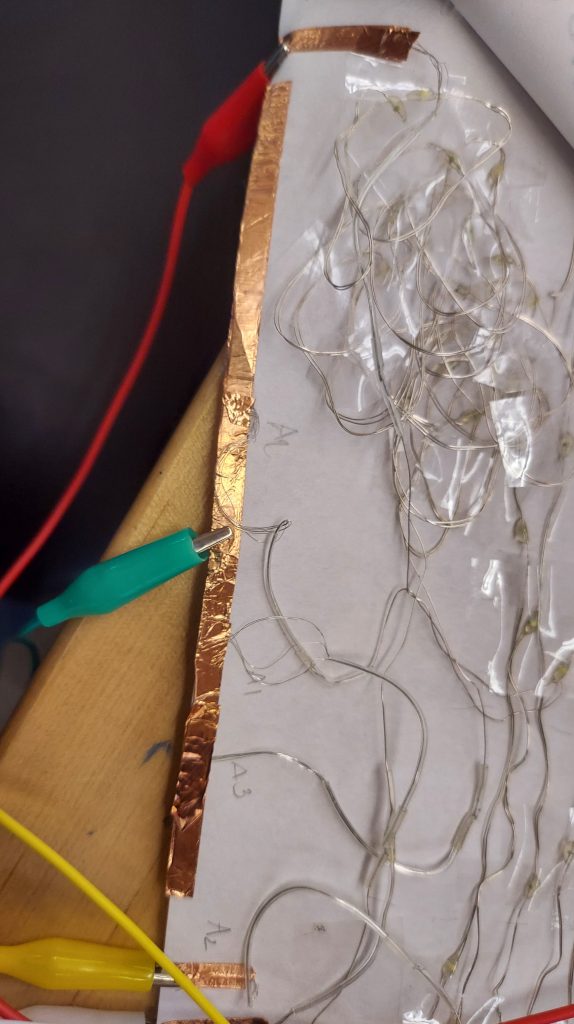Description: when there is lightning (snap your finger) at the lightning, the rain will fall and when it touches the flower it will lighten up
During the process, I encountered an unexpected failure. While attempting to upload new code to the Arduino, I improperly ejected it. The right way was to drop the file into the trash. As a result, the Arduino continued running the old code, which made all the lights turn on simultaneously instead of just testing A1 as intended.
Despite this setback, there were several successes throughout the project. Drawing inspiration from the Dandelion Project, I developed a new idea and created a solid plan. Talking it through with Mo at Fimbel was key to refining the concept and ensuring the design worked smoothly. Ultimately, I successfully designed the circuit and coded it to achieve the desired effect.
The journey was not without its challenges, but overcoming them and seeing the final design come to life was incredibly rewarding.
Pictures of my process:


A video of the final product is available at this link
Reflecting on the project, I see that I was strategic in several aspects, particularly by using the self-regulated learning cycle of planning, doing, and evaluating. However, I realize I could have been more deliberate in testing the circuit earlier and more frequently. Instead of coding everything first and debugging later, it would have been smarter to test smaller sections of the circuit as I went. This way, I could have pinpointed issues more easily, rather than letting problems accumulate and become harder to trace.
Active listening was crucial when interacting with my TA and Mo at the Fimbel Lab. My TA helped from the beginning by ensuring she fully understood my ideas, gathering components with me, and guiding me through the setup. Mo, in particular, was instrumental in refining my circuit design. She suggested placing LED1 higher than LED2 to create a “rainfall” effect and arranging the LEDs in a zigzag pattern to make the visual flow more dynamic. These small yet impactful changes made a significant difference in the overall design.
When tackling complex tasks, breaking them into smaller, manageable steps has been crucial. I now plan by outlining each step and identifying the necessary resources—whether that’s advice from my TA, supplies from Fimbel Lab, or brainstorming with my friend Natalie, who’s great with circuits.
To execute this plan, I’ve set aside focused time blocks on Tuesday after class and Wednesday afternoon. During these sessions, I’ll gather materials, finalize my design, and review course materials to ensure everything aligns.
This structured approach not only helps me meet deadlines efficiently but also reinforces my confidence in my abilities. I’m proud of how far I’ve come, and I realize that active listening and careful planning have been the biggest motivators pushing me forward in this class. I’m truly grateful for the opportunity to intentionally practice these skills, which continue to enhance both my work and my self-efficacy.